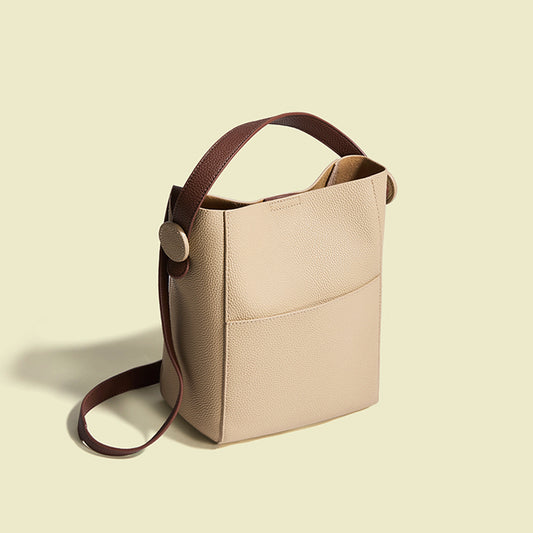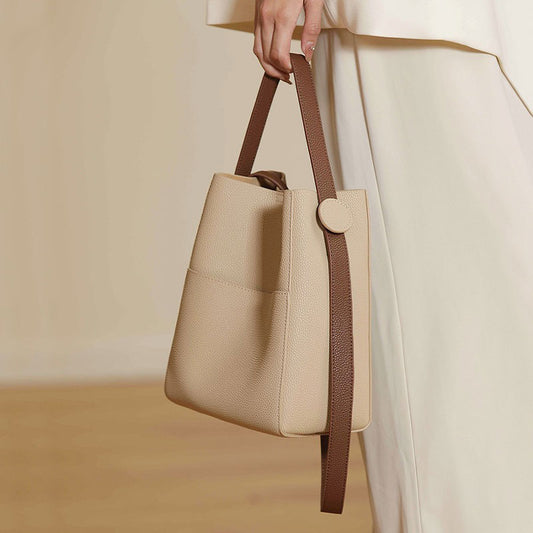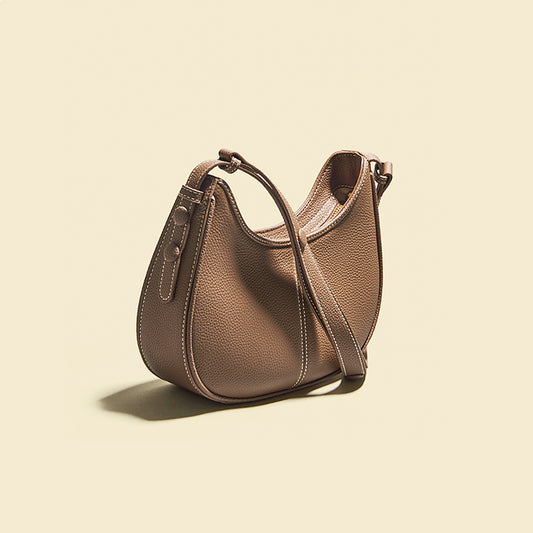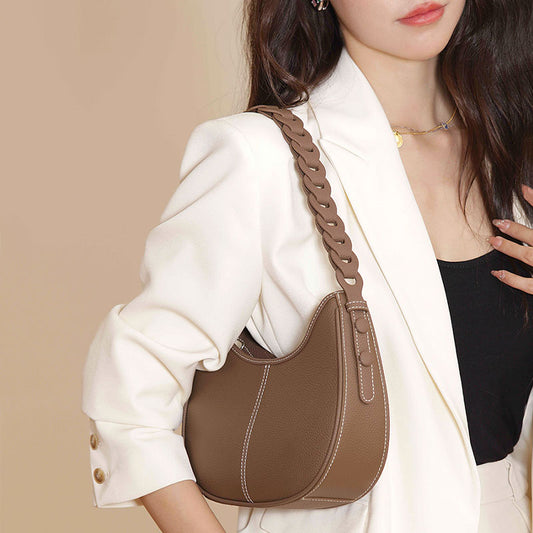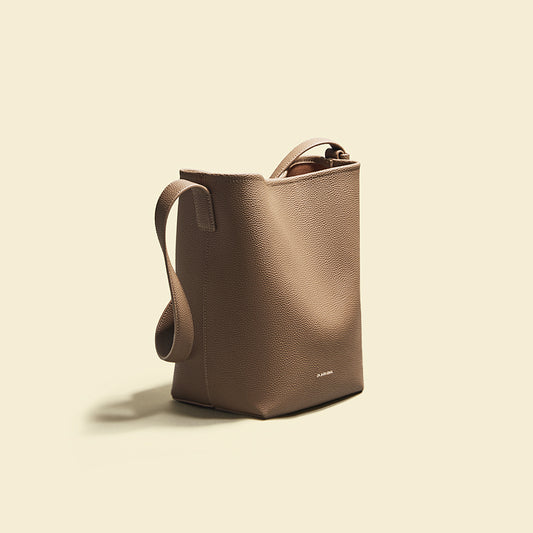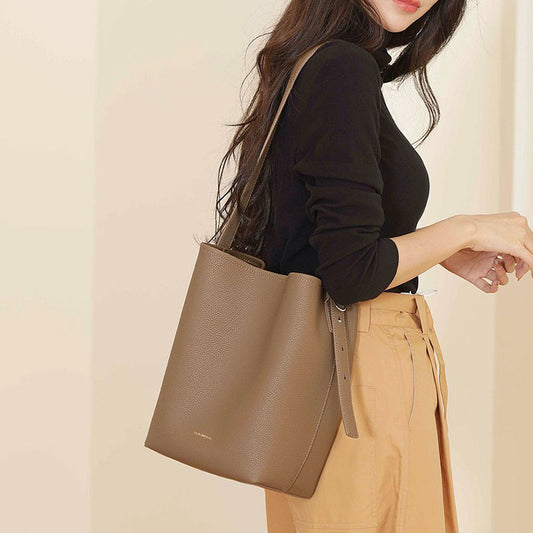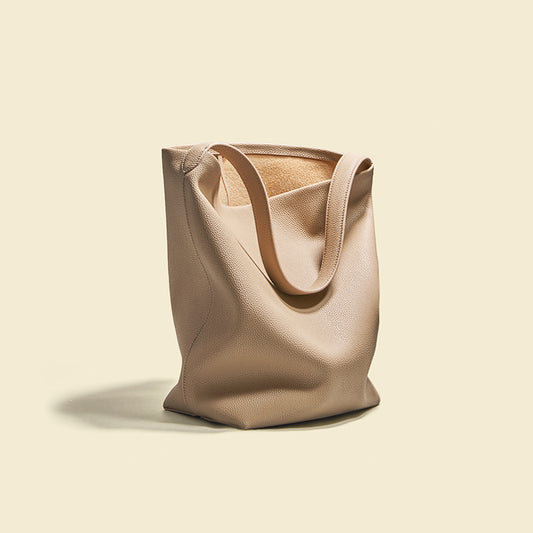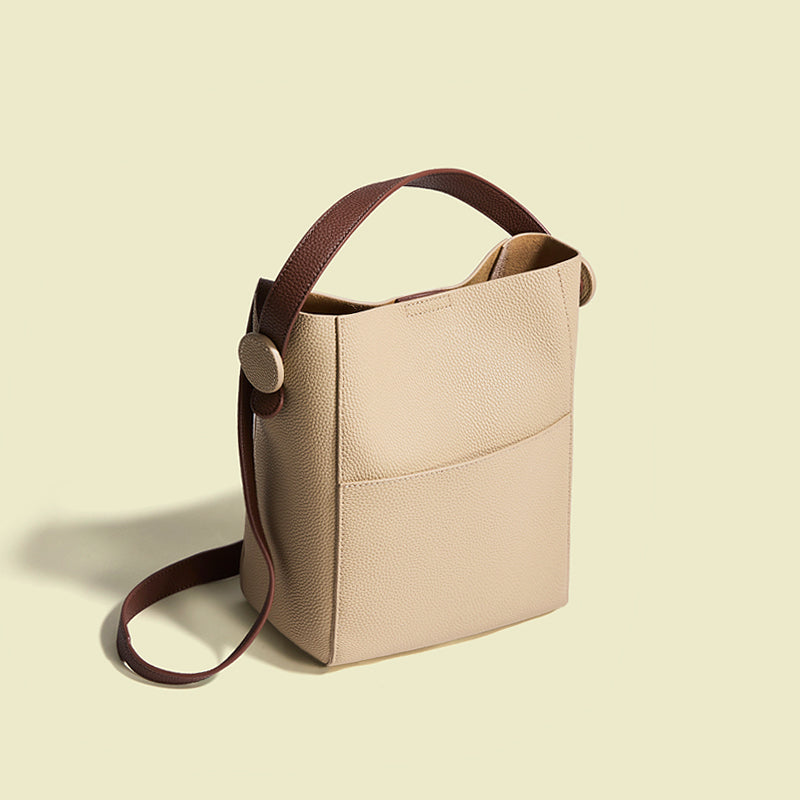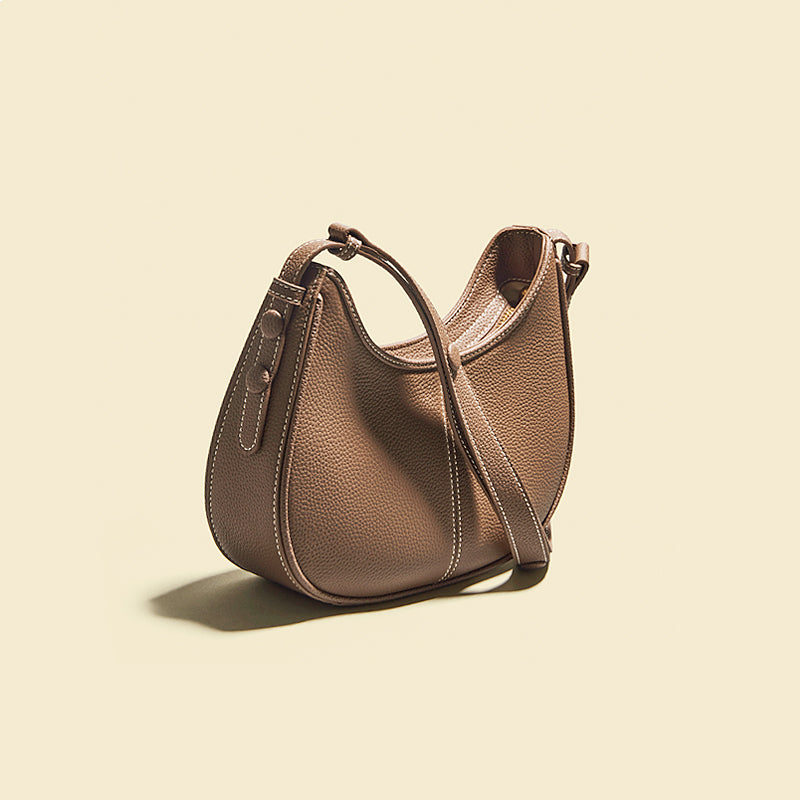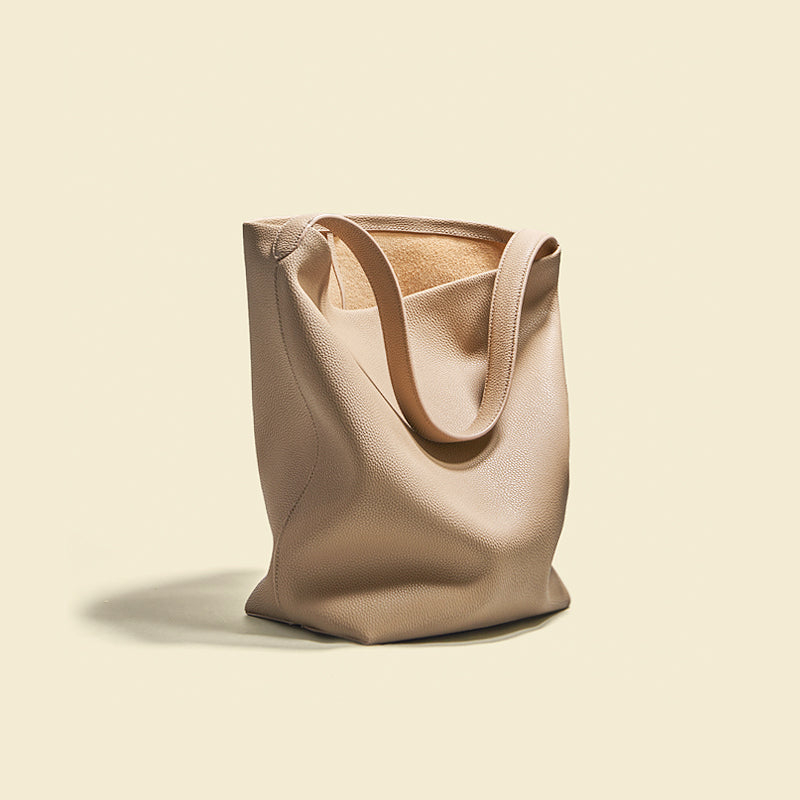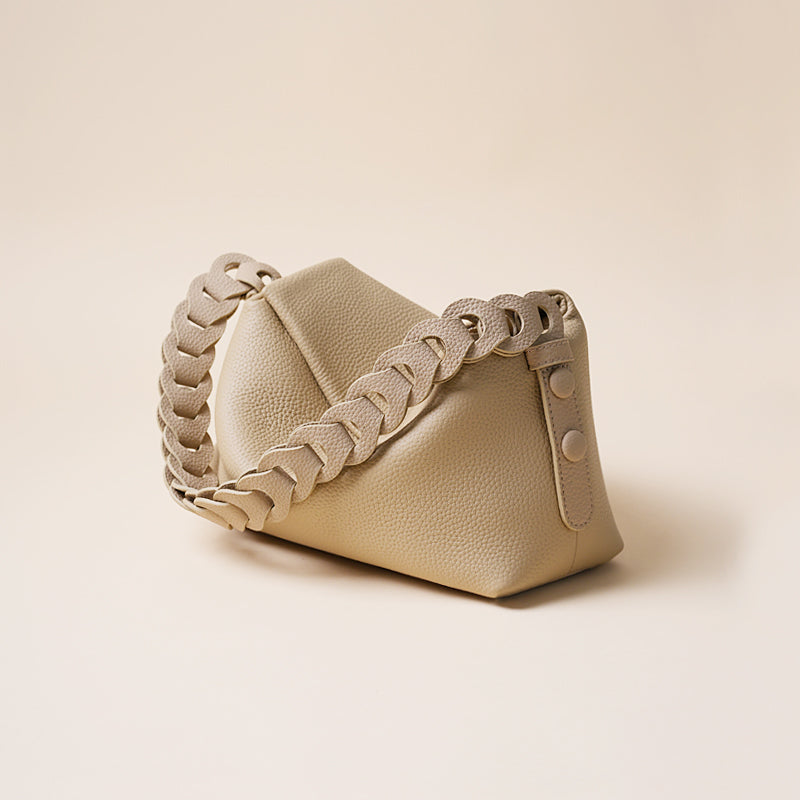Introduction
In the universe of accessories, it's all about choices, and we're diving into the world of purses, where the age-old battle between faux leather and the real deal takes center stage. Real leather, the VIP of materials, boasts natural beauty, unique texture, and durability that turns heads. On the flip side is faux leather – the synthetic sensation made from a cocktail of polymers, often playing the budget-friendly card.
Both have their perks and quirks, but which one suits your vibe? In this blog, we will address that query. Let's dive into "Purse: Faux Leather vs Real Leather" and make your next buy a fashion-forward success!
Real Leather Purses
Real leather isn't just a material; it's a craft, a story, and a style statement. So, Let's delve into what makes real leather stand out from the crowd.
Definition and Manufacturing of Real Leather
Real leather starts its journey as animal hides, often sourced from cattle, goats, sheep, or pigs. It's nature's way of providing a unique canvas for crafting timeless accessories. The magic happens in the tanning process – a meticulous treatment with various chemicals that transforms raw hides into the supple, durable leather we love.
Advantages of Real Leather Purses
Natural Beauty: Real leather ages like a fine wine, developing a patina that tells a story with every wear.
Luxurious Feel: There's no comparison to the touch of genuine leather, offering a tactile experience that elevates your style.
Durability: Sturdy and robust, real leather purses are more than accessories; they're long-lasting companions on your style journey.
Considerations for Real Leather Purses
Before you take the plunge into the world of genuine leather, here are some things to keep in mind:
Investment: Yes, real leather often comes with a higher price tag, but think of it as an investment in a durable and stylish accessory that transcends passing trends.
When delving into the realm of real leather, it's essential to note that prices vary, reflecting differences in leather types and processing methods. The texture, pattern, and quality of leather can vary depending on which animal component it comes from. Full-grain, top-grain, and corrected-grain leather are examples of these variances.
A vital stage in the creation of leather is tanning, which is applying different chemicals to raw hides. Different tanning methods impart distinct characteristics to the leather. Additionally, dyeing and finishing processes enhance the leather's appearance and color.
Combining traditional craftsmanship with modern technology in crafting genuine leather wallets results in high-quality leather products. These differences contribute to variations in the prices of genuine leather purses. So, when making your choice, consider not only your style preferences and budget constraints but also the intricate craftsmanship and quality associated with genuine leather products.
Regina, a brand specializing in high-quality full-grain leather women's purses, offers an exquisite collection that seamlessly blends elegance and durability. Regina offers excellent quality products at reasonable costs, so you get both value and style. Explore the collection to experience the artistry of real leather without compromising on your budget. Choose Regina leather bag for a combination of quality and affordability in the world of leather purses.
Maintenance: Like any valuable possession, real leather requires a bit of Tender Loving Care. Maintaining regular conditioning and cleaning will keep it looking flawless.
Ethical Choices: If ethical considerations are a priority, remember that real leather is derived from animal hides, and it's crucial to align your values with your purchase. However, with reputable sources and responsible practices, it's possible to align your values with your purchase.
Faux Leather Purses
Definition and Manufacturing of Faux Leather
So, what's the deal with faux leather? It is a clever invention that simulates the opulent appearance and texture of genuine leather without the actual thing. Faux leather is made from polymers, usually polyvinyl chloride (PVC) or polyurethane (PU), and it goes through an interesting layering process. Picture this as a meticulous dance between fabric and polymer, resulting in a material that gives you that chic leather vibe.
Advantages of Faux Leather Purses
Why are faux leather purses making waves? Here are the headline advantages:
Affordability: Faux leather is the budget-friendly darling, offering a stylish alternative without breaking the bank.
Vegan and Cruelty-Free: For the conscious consumer, faux leather provides a guilt-free option as it skips the use of animal products.
Variety of Styles and Colors: Dive into a world of possibilities – faux leather is a canvas for bold colors and unique textures, letting you express your style in vibrant ways.
Potential Drawbacks of Faux Leather Purses
But hold up, let's talk about the flip side:
Durability Concerns: While faux leather can strut its stuff for a good while, it might not age as gracefully as the real deal. Wear and tear may make an appearance sooner.
Environmental Impact: Despite being cruelty-free, the production of faux leather involves synthetic materials, which can raise environmental questions. If eco-friendliness is high on your priority list, it's essential to weigh the environmental impact against the other benefits.
Comparing Faux Leather and Real Leather: How to Distinguish Between the Two
Alright, let's unravel the secrets of telling faux leather and real leather apart – because making an informed decision is key.
Texture and Appearance
Real leather boasts natural imperfections and unique grain patterns, setting it apart from the more consistent and uniform appearance of faux leather. Feel the surface with your fingertips; genuine leather has a unique tactile appeal.
Smell Test
Here's a little trick – take a whiff. Real leather carries a natural, earthy scent derived from the tanning process, while faux leather might lack that characteristic aroma. Trust your nose; it often knows.
Flexibility and Softness
Feel the material. Genuine leather eventually becomes more flexible and soft to the touch. In contrast, faux leather may feel stiffer and less yielding.
Edges and Cut
Inspect the edges closely. Real leather tends to have rougher, less uniform edges, reflecting the natural variations in the hide. Faux leather, on the other hand, often exhibits more precisely cut edges.
Burn Test (Caution):
Now, a word of caution – the burn test. While real leather produces a distinctive burnt hair smell, faux leather may smell like burning plastic. Exercise caution, and keep this method as a last resort due to potential fumes.
Water Absorption
Consider water – real leather absorbs it, a characteristic that might be handy to know if you're concerned about potential water damage. Faux leather, in contrast, often repels water.
Labeling and Brand Authenticity
Check the labels and branding. Genuine leather products typically come with clear markings or certifications. Watch out for terms like "leatherette" indicating faux leather. Brand authenticity can be your guide.
Price Point
Lastly, let's talk dollars. Authentic leather often has a higher price tag than imitation leather. Price can be a telling factor in determining the authenticity of the material.
Considerations When Choosing Between Faux Leather and Real Leather Purses
Alright, let's talk about the crucial factors to weigh when making that ultimate decision between faux leather and real leather purses. Because let's face it – a well-informed choice is a stylish choice.
Style Preference
Consider your style. Are you drawn to the timeless elegance of real leather, or does the versatility and trendiness of faux leather better align with your fashion sensibilities?
Budget Constraints
Let's talk money. What's your budget? For people who desire a fashionable purse without going over budget, faux leather is an enticing alternative because it frequently has a more affordable price tag. Real leather, while an investment, promises enduring quality.
Ethical Values
Reflect on your ethical considerations. Are you passionate about cruelty-free options? Faux leather provides a guilt-free alternative for those who prioritize animal welfare.
Environmental Impact
Environmental consciousness matters. Consider the ecological footprint of your choice. Faux leather, while avoiding the use of animal products, involves synthetic materials. Real leather, on the other hand, comes from natural sources but may have environmental considerations in the production process.
Durability Requirements
How long do you want your purse to last? Real leather is known for its durability and ability to age beautifully. In contrast, faux leather may show signs of wear and tear more quickly.
Maintenance Commitment
Think about maintenance. Are you willing to put in the effort to care for your purse? Real leather requires regular cleaning and conditioning, whereas faux leather may be more forgiving in this aspect.
Personal Values Alignment
Ultimately, align your choice with your values. Whether it's a commitment to timeless elegance, ethical considerations, or budget constraints, your purse should reflect what matters most to you.
Fashion Trends Or Timelessness
Consider your stance on fashion trends. Faux leather allows for more experimentation with styles and colors. In contrast, real leather offers a timeless appeal that transcends fashion fads.
Conclusion
In the realm of purses, the choice between faux leather and real leather is a nuanced decision. Whether you opt for genuine leather elegance or the vibrant versatility of faux leather, make a stylish and mindful choice that resonates with your unique preferences. Happy purse shopping!

